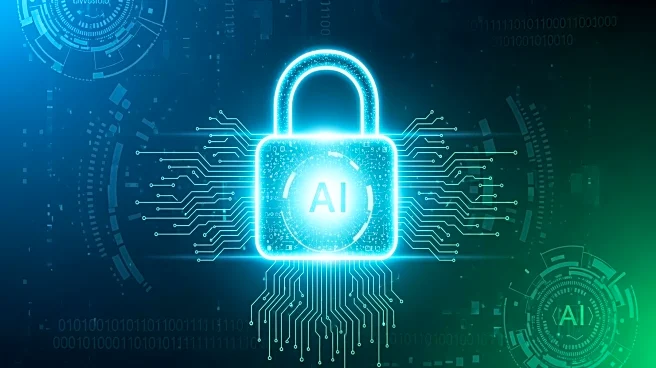What's Happening?
Artificial intelligence-powered social engineering has been identified as the leading cybersecurity threat for the upcoming year, according to a report by Infosecurity Magazine. The report highlights that 63% of IT and cybersecurity professionals view
AI-driven social engineering as a more significant threat compared to ransomware and supply chain attacks, which were cited by 54% and 35% of respondents, respectively. The 2026 ISACA Tech Trends and Priorities report further reveals that only 13% of professionals feel 'very prepared' to handle risks associated with generative AI, while 25% admit to being 'not very prepared.' The report underscores the need for improved governance, policies, and training to address these emerging threats. Despite these challenges, over half of the respondents indicated that AI and machine learning remain top investment priorities.
Why It's Important?
The rise of AI-driven social engineering as a primary cybersecurity threat has significant implications for industries reliant on digital infrastructure. Organizations may face increased risks of data breaches and financial losses if they fail to adapt to these evolving threats. The fragmented regulatory landscape in the U.S. poses additional challenges for compliance, as highlighted by ISACA Vice President of Content Development Karen Heslop. Companies that do not strengthen their AI governance and cyber resilience may struggle to protect sensitive information, potentially leading to reputational damage and legal liabilities. The demand for skilled professionals in digital trust roles is expected to grow, with 44% of respondents anticipating hiring difficulties in 2026.
What's Next?
Organizations are likely to increase investments in AI and machine learning to bolster their cybersecurity defenses. The development of comprehensive governance frameworks and training programs will be crucial in mitigating the risks associated with AI-driven social engineering. As the U.S. regulatory environment remains fragmented, companies may look to international models, such as the EU's AI Act, for guidance on compliance. The cybersecurity industry may also see a surge in demand for talent, prompting educational institutions and training providers to expand their offerings in this field.













